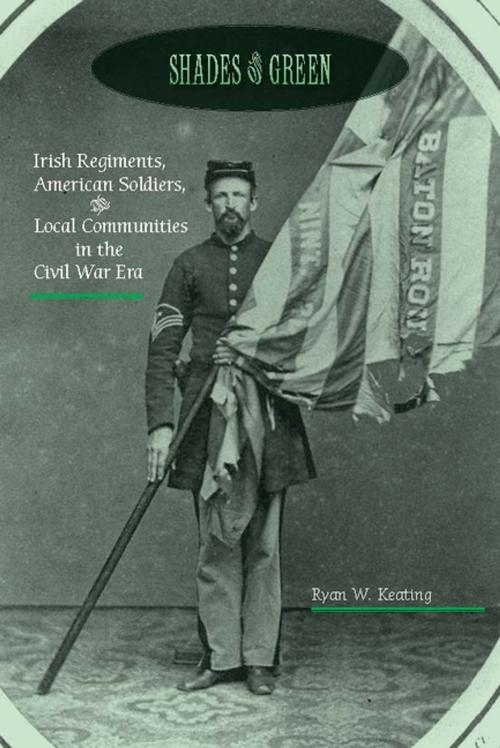Shades of Green
Irish Regiments, American Soldiers, and Local Communities in the Civil War Era
Nonfiction, History, Americas, United States, Civil War Period (1850-1877)| Author: | Ryan W. Keating | ISBN: | 9780823276615 |
| Publisher: | Fordham University Press | Publication: | August 8, 2017 |
| Imprint: | Fordham University Press | Language: | English |
| Author: | Ryan W. Keating |
| ISBN: | 9780823276615 |
| Publisher: | Fordham University Press |
| Publication: | August 8, 2017 |
| Imprint: | Fordham University Press |
| Language: | English |
Drawing on records of about 5,500 soldiers and veterans, Shades of Green traces the organization of Irish regiments from the perspective of local communities in Connecticut, Illinois, and Wisconsin and the relationships between soldiers and the home front. Research on the impact of the Civil War on Irish Americans has traditionally fallen into one of two tracks, arguing that the Civil War either further alienated Irish immigrants from American society or that military service in defense of the Union offered these men a means of assimilation. In this study of Irish American service, Ryan W. Keating argues that neither paradigm really holds, because many Irish Americans during this time already considered themselves to be assimilated members of American society.
This comprehensive study argues that the local community was often more important to ethnic soldiers than the imagined ethnic community, especially in terms of political, social, and economic relationships. An analysis of the Civil War era from this perspective provides a much clearer understanding of immigrant place and identity during the nineteenth century.
With a focus on three regiments not traditionally studied, the author provides a fine-grained analysis revealing that ethnic communities, like other types of communities, are not monolithic on a national scale. Examining lesser-studied communities, rather than the usual those of New York City and Boston, Keating brings the local back into the story of Irish American participation in the Civil War, thus adding something new and valuable to the study of the immigrant experience in America’s bloodiest conflict.
Throughout this rich and groundbreaking study, Keating supports his argument through advanced quantitative analysis of military-service records and an exhaustive review of a massive wealth of raw data; his use of quantitative methods on a large dataset is an unusual and exciting development in Civil War studies. Shades of Green is sure to “shake up” several fields of study that rely on ethnicity as a useful category for analysis; its impressive research provides a significant contribution to scholarship.
Drawing on records of about 5,500 soldiers and veterans, Shades of Green traces the organization of Irish regiments from the perspective of local communities in Connecticut, Illinois, and Wisconsin and the relationships between soldiers and the home front. Research on the impact of the Civil War on Irish Americans has traditionally fallen into one of two tracks, arguing that the Civil War either further alienated Irish immigrants from American society or that military service in defense of the Union offered these men a means of assimilation. In this study of Irish American service, Ryan W. Keating argues that neither paradigm really holds, because many Irish Americans during this time already considered themselves to be assimilated members of American society.
This comprehensive study argues that the local community was often more important to ethnic soldiers than the imagined ethnic community, especially in terms of political, social, and economic relationships. An analysis of the Civil War era from this perspective provides a much clearer understanding of immigrant place and identity during the nineteenth century.
With a focus on three regiments not traditionally studied, the author provides a fine-grained analysis revealing that ethnic communities, like other types of communities, are not monolithic on a national scale. Examining lesser-studied communities, rather than the usual those of New York City and Boston, Keating brings the local back into the story of Irish American participation in the Civil War, thus adding something new and valuable to the study of the immigrant experience in America’s bloodiest conflict.
Throughout this rich and groundbreaking study, Keating supports his argument through advanced quantitative analysis of military-service records and an exhaustive review of a massive wealth of raw data; his use of quantitative methods on a large dataset is an unusual and exciting development in Civil War studies. Shades of Green is sure to “shake up” several fields of study that rely on ethnicity as a useful category for analysis; its impressive research provides a significant contribution to scholarship.















